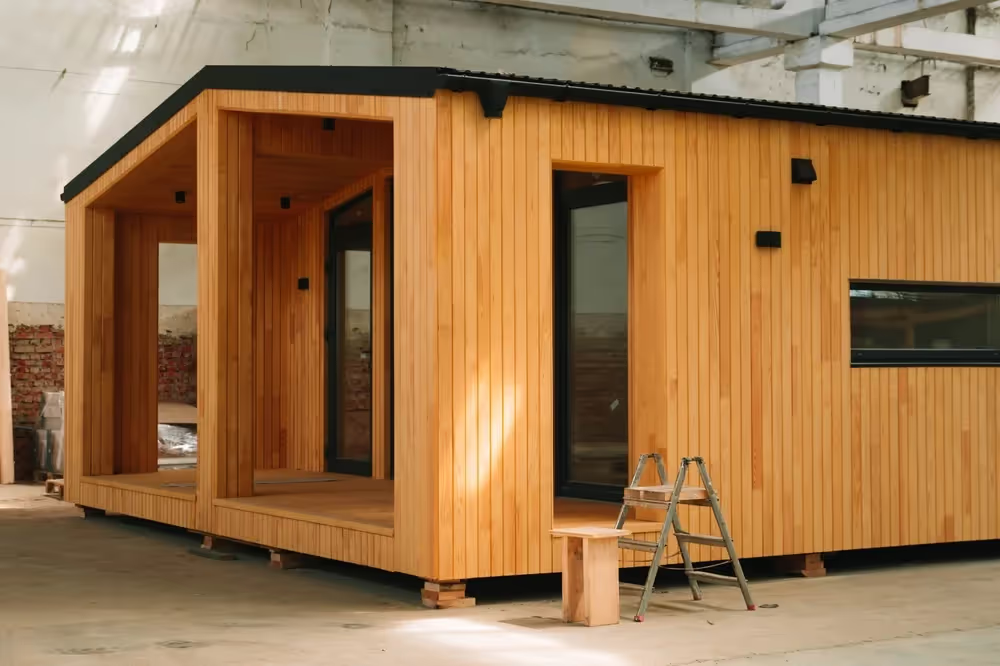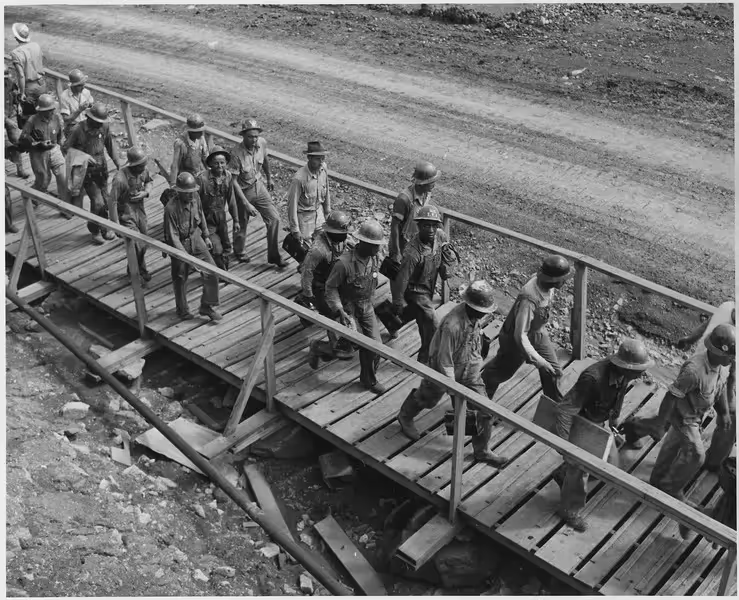
Creating Affordable Housing Requires Just One Simple Legislative Change
Since the 1974 permanent chassis requirement was implemented, manufactured housing has never regained its previous market share.
Imagine purchasing a new car in which all the components (from the headlights to the transmission to the steering wheel) were delivered in a pile to your driveway and then hiring skilled workers to assemble them into a finished automobile. That process would, of course, be far more expensive and take much longer than building a car in modern factories that harness the efficiencies of mass production and state-of-the-art technologies.
Almost every durable good today is produced in efficient factories that deliver high quality at low prices to consumers. We emphasize the phrase “almost every durable” because the artisanal method described above is exactly how most homes in the U.S. are still built. Traditional, site-built home construction remains extremely costly. This is a major reason why houses assembled piece by piece by individual workers continue to be so expensive and why we face such a severe housing affordability crisis in many states.
The productivity implications of modern manufacturing compared to artisanal building are enormous. A special study by the Bureau of Labor Statistics on traditional housing construction found that worker productivity rose by only 11 percent between 1987 and 2016. By comparison, BLS data show that worker productivity in durable goods manufacturing rose by about 150 percent over the same period. The efficiency gains enjoyed by consumers of manufactured durables are largely absent from residential construction because traditional building practices have not adopted the cost-saving technological advances common in manufacturing.
There is, however, one important exception. Some homes are built entirely in factories using modern mass-production technologies, and they cost consumers about half as much per square foot as traditionally built houses. Despite this clear cost advantage, manufactured homes account for only about 10 percent of new housing in the U.S. today, primarily due to a single outdated regulation.
That outdated regulation is the permanent chassis requirement, established under the 1974 Mobile Home Construction and Safety Standards Act. This rule mandates that manufactured homes be built on a chassis (a fixed steel frame with wheels), which raises costs, blocks access to conventional mortgage financing since the house can be moved, and, perhaps most importantly, reinforces the “mobile home” image that fuels zoning resistance. As a result, manufactured housing, forced to sit on its unsightly permanent trailer, has been largely relegated to mobile home parks over the past 50 years.
It was not always like this. Before the 1974 chassis requirement, manufactured homes were taken off their trailers upon delivery, set on foundations, and resembled other single-family houses in the neighborhood. In the early 1970s, nearly one in three new homes was manufactured. But after the rule was implemented, production dropped sharply, decreasing 60 percent from 575,000 units in 1972 to 222,000 in 1980, or about one in ten homes. Manufactured housing has never regained its previous market share.
This is why deleting just five words (“built on a permanent chassis”) from the 1974 regulation would unlock vast homeowner potential for households that now struggle to afford a home. In 2024, the per-square-foot cost of a manufactured home averaged $84.45, meaning a 1,500-square-foot home could be built for under $130,000.
Removing the chassis requirement would be a game-changer, particularly in high-cost housing states like California. The median price of a single-family home in California is about $900,000, reflecting the extremely high cost of building there, and only around fifteen percent of households can afford to own such a home. Construction costs in California can exceed $700 per square foot, which means a 1,500-square-foot home can cost more than $1 million to build using traditional methods. By contrast, a 1,500-square-foot manufactured home could be built for less than $150,000. Even after adding more than $50,000 for installation, utility hookups, permitting, and land, the total would be around $200,000—only about 22 percent of the cost of the median California home.
The chassis requirement was originally justified as a safety measure, but scholars such as Jim Schmitz at the Minneapolis Fed have argued that industry lobbying played a key role. Large builders and unions feared that factory-built housing would undercut traditional construction, and the chassis rule offered a convenient way to hobble the new competition. What may have appeared to be a technical regulation ultimately had the effect of protecting incumbent interests, while imposing enormous long-term costs on households seeking affordable homes, and paradoxically, making manufactured homes less safe.
Placing a home on a foundation, as was done before the rule, is far safer than leaving it on a rolling chassis. Between 1996 and 2023, 815 people in manufactured homes were killed by tornadoes, accounting for 53 percent of such deaths, even though manufactured housing made up less than 10 percent of the stock. The Permanent Chassis Requirement raises homes above the ground, transforming the underside into a type of airfoil that enables strong winds to lift the structure during storms. Atmospheric scientist Kim Klockow-McClain explained, “You just have to be in some structure that’s attached to the ground. And then no matter what the tornado throws at you, then you have really good odds.”
Some legislators, including Representative John Rose and Senator Tim Scott, have attempted to eliminate the chassis requirement. Congressman Rose’s recent bill proposed striking the five words mandating a permanent chassis from the 1974 regulation, and Senator Scott has introduced similar measures several times over the years.
Although previous efforts have failed, there is hope that new legislation will succeed in expanding affordable housing options: the Road to Housing Act, a bipartisan effort led by Senators Scott and Elizabeth Warren, would repeal the permanent chassis requirement. In late July, it was passed unanimously by all 24 members of the Senate Banking Committee – 13 Republicans and 11 Democrats – and will now move to the full Senate for a vote. The Act includes removing the permanent chassis mandate.
For too long, housing policies have mainly focused on funding that increases housing demand. Although well-meaning, these policies have kept home prices artificially high by boosting demand. The bipartisan Road to Housing Act differs from past efforts because, by removing the chassis requirement, it will make manufactured housing more acceptable in communities outside of mobile home parks. Furthermore, by expanding the market for manufactured homes, we will see additional increases in productivity in that sector, as well as improvements in the range and quality of homes manufactured. These changes will create homeownership opportunities for many families who would otherwise never have had a chance to own a home.
This bill presents a historic opportunity to improve millions of lives by allowing the vast benefits of modern technologies to reach households that cannot afford a home, which is still built much the same way it was a century ago. Greater access to affordable homeownership would also bring broader benefits: more stable neighborhoods, lower rents, and less homelessness.
For nearly 50 years, federal, state, and local governments have tried to improve housing affordability without addressing the core issue of high construction costs. Now, we have a simple, bipartisan-supported policy that could genuinely make a difference. Let us not waste this opportunity.
Jesús Fernández-Villaverde is the Howard Marks Presidential Professor of Economics at the University of Pennsylvania and a non-resident senior fellow at the Civitas Institute at the University of Texas at Austin.
Lee E. Ohanian is the Distinguished Professor of Economics at the University of California, Los Angeles.
Economic Dynamism

The Causal Effect of News on Inflation Expectations
This paper studies the response of household inflation expectations to television news coverage of inflation.
.avif)
The Rise of Inflation Targeting
This paper discusses the interactions between politics and economic ideas leading to the adoption of inflation targeting in the United States.

Ignore 'Open Letters' From Economists
Don’t be swayed by “open” letters signed by well-known and well-respected scholars, experts, professors, and businessmen.

Demystifying the New Deal
Carola Binder reviews False Dawn: The New Deal and the Promise of Recovery, 1933–1947 by George Selgin

Texas Stands on Commerce
Clear limits on shareholder resolutions have made Texas a model of business certainty — and business is flooding in.

America Needs Its Hidden Champions
From imaging systems to next-gen GPS, small and midsized manufacturers are quietly rebuilding America’s industrial and defense backbone.






.jpg)



.avif)




